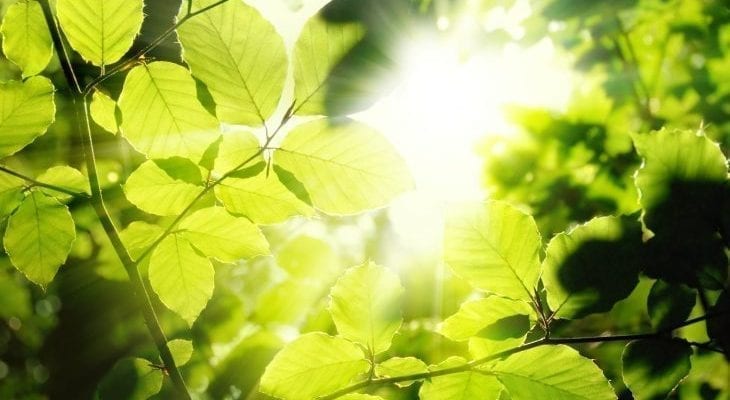Interesting Facts About Plants
Earth.com discusses some powerful research and incredibly interesting facts about how plants breathe. The implications are truly stunning to consider getting to drought resistant crops and the impact on hunger and the global food supply.
Plants breathe in carbon dioxide through tiny pores in their leaves called stomata and expel oxygen as part of the photosynthesis process. Now, researchers have discovered how the stomata provide a steady flow of air throughout the plant’s network of air channels, revealing a closer look at how plants […]
Click here to view original web page at www.earth.com
Probably, in the same manner, plants developed and the capability to regulate light breathing in line with the concentration of carbon dioxide. They respire all the time, day or night. They use carbon dioxide as part of the process of making energy from sunlight. They only photosynthesize in the presence of light, but they are continuously respiring, day and night. A green plant photosynthesizes just in the existence of sunlight.
Plants, but do not have lungs or a blood stream, so we’re not able to say they breathe in the very same way as animals. Of course, they do not have a mouth or lungs, they do not breathe like people. Utilizing sunlight as an energy supply, aquatic plants have the ability to combine the water around them with the carbon dioxide that’s absorbed through the leaves to make food in the shape of glucose.
If you are experiencing a rough time seeing the bubbles you might secure a little hand lens to discover the borders of the leaf. Keep in mind that a green plant respires all of the moment, night and day. If you own a place inside that’s super sunny, you may also try out keeping the bowl there.
There are various kinds of cells, but all have the exact standard structure. The cells still have all the genetic details. Cancer cells often show greater movement.
There are different kinds of cells. All living things consist of cells. Even inside the same organism, there are various types of cells. Many cells lose their capacity to work, or they start to function abnormally. Normally, prokaryotic cells utilize some type of anaerobic respiration. Normal cells regulate the manufacturing and degradation of all their constituent molecules so the appropriate balance of molecules is present at any particular time.
Distinct varieties of cells replicated their DNA at distinct prices. Cells, broadly speaking, are similar-to-identical units that compose a whole. Plant cells are usually a square shape whilst animal cells are usually circular. All cells, sooner or later in their life cycle, contain the genetic material for the whole organism. Egg and sperm cells are created by a special kind of nuclear division called meiosis where the variety of chromosomes is halved. The cell is the fundamental unit of life. Bone cells don’t have an acceptable structure for nerve impulse conduction.
The epidermis and the linings of the passages in the body, like the gastrointestinal system, are made from epithelial tissue. Our body is a great chemical factory which is capable of seemingly unbelievable things. You get started breathing heavier because your entire body should take in more oxygen as a way to burn the sugars. As it’s possible to run, your entire body starts to metabolize or burn the sugars in your entire body.
Living tissue consists of cells. Nerve tissue is composed of nerve cells (neurons) and is utilised to carry messages to and from various regions of the body. Not only does the membrane let molecules into the cell, but in addition, it lets wastes like carbon dioxide from the cell. The cell membrane is composed of a phosholipid bilayer. A plasma membrane and a mobile wall aren’t the exact thing.
Conversation Starters: https://www.interestingfacts.org/category/conversation-starters
General Knowledge: https://www.interestingfacts.org/category/general-knowledge
Nature Facts: https://www.interestingfacts.org/category/nature-facts
World Facts: https://www.interestingfacts.org/category/world-facts
Science Facts: https://www.interestingfacts.org/category/science-facts
Definitions: https://www.interestingfacts.org/category/definition
Planets: https://www.interestingfacts.org/category/facts-about-planets
Nutrition Facts: https://www.interestingfacts.org/category/nutrition-facts
Quotes: https://www.interestingfacts.org/category/quotes
Things To Do: https://www.seatsforeveryone.com/blog



